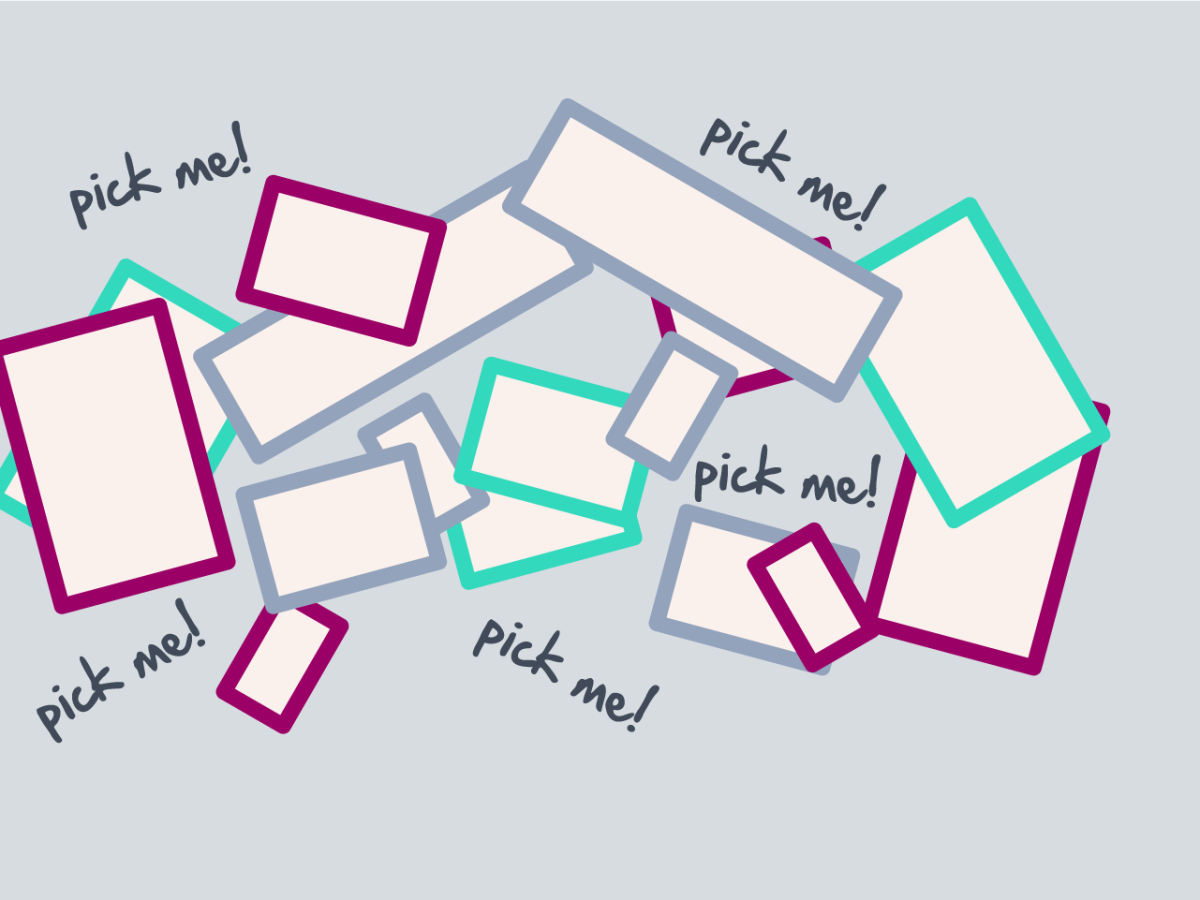
Select the best
Francesco Marcatto18 Jul 16
The end of a typical brainstorming session can be a little messy. There are sticky notes everywhere, the whiteboard is full ideas and sketches, you all are both exhausted and excited, but...what now? How to decide which one of the multitude of ideas to implement?
More ideas = better ideas?
Selection is a critical step for the effectiveness of a group creativity session. Most creativity techniques, however, focus on how to produce a lot of ideas, and the selection phase is overlooked.
After all, it is true that the more ideas you have, the more likely is that one of those is something that really shines. But are we really capable of distinguishing the best available idea among a large pool of ideas?
The answer from the world of research is not the one we wanted to hear: no, selecting the best idea is not something we are good at.
Too many choices
Dealing with a lot of alternatives is not something we’re very good at. Contrary to popular belief, having many options to choose from can be counterproductive and have detrimental psychological effects (see for example, Iyengar & Lepper, 2000; Shah & Wolford, 2007; Dar-Nimrod et al., 2009; ).
Studies show we are attracted to large assortments, but are less satisfied with outcome than when we choose from smaller assortments. In other words, we prefer an ice-cream parlour with 50 flavours, rather than 10, but once there, choosing our ice cream can be complicated and we are more likely to experience regret and dissatisfaction ('Hey, I should have bought Champagne and Violette instead of Sweet 'n Salty Pretzel!').
That's why the whole Neonce process is structured to minimize the issue of information overload.
Judgement and agreement
Deciding and agreeing on which idea to pursue is a complex process. It combines both individual cognitive processes, like judgment and decision making, and group dynamics, like conformity, obedience and groupthink, amongst others.
We need some clever group evaluation methods to help us make the right decision. Fortunately, there are many group selection techniques that can be employed, ranging from the fast and frugal, to the more sophisticated compensatory rules, such as the multiple attribute evaluation.
In Neonce we currently implement smart ranking, where each voting chip is weighted according to it’s rank. This method not only provides a numerical winner, but also allows you to see which was everyone’s favorite idea, and how many people voted for each idea. You can balance these different metrics to build a clearer idea of the voting pattern and reach a consensus.
This is the only voting method we have so far but we'll be adding more according to demand, if you would like to see another voting method, let us know!
Result reports
Another huge benefit of digital idea generation is that Neonce can automatically generate a final report containing both the final decision and all the other ideas shared by the group. As one of the respondents to our survey about brainstorming wrote, one of the most common brainstorming problems is that, 'People forget to take notes for archive purposes and to drive action points, making follow up and tracking direction tricky'.
This is one of the reasons people shake their head saying, 'Oh no, not another pointless meeting', and we want to make sure it never happens again! With Neonce, everything will be recorded and ready for the next step, so you and your team will be immediately ready to transform ideas into action.
The first version of Neonce is online, and it’s completely FREE. If your team would benefit from this, we would love to hear from you and you can sign up for a free version here.
This is just one feature of the Neonce method. Curious to see the others?
Read the rest in this 5 part series:
References
- Dar-Nimrod, I., Rawn, C. D., Lehman, D. R., & Schwartz, B. (2009). The maximization paradox: The costs of seeking alternatives. Personality and Individual Differences, 46(5), 631-635.
- Iyengar, S. S., & Lepper, M. R. (2000). When choice is demotivating: Can one desire too much of a good thing?. Journal of personality and social psychology, 79(6), 995.
- Shah, A. M., & Wolford, G. (2007). Buying behavior as a function of parametric variation of number of choices. Psychological Science, 18(5), 369-370.







